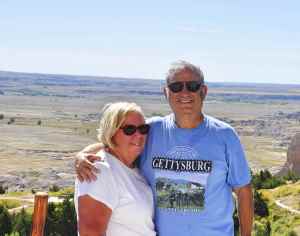Day 372
So, where was Robert E. Lee’s last major battle before he surrendered at Appomattox Court House? I thought it was Richmond, Virginia (based on the phrase “like Grant took Richmond”), but I was mistaken.
Grant began his march from Washington, DC with the intention to take the Capital of the Confederacy in Richmond, Virginia. He fought many battles on the way, in which Lee continued to outflank him (as stated in previous posts). Because of no decisive victories, and suffering some defeats, Grant decides to attack Petersburg, Virginia, as that is the hub of the Confederacy’s supply and transportation lines. The thought was cut off Lee’s supplies, and Richmond falls. It was not as easy as he thought. The siege of Petersburg took him 9 months.
Finally on April 2, 1865, Grant breaks through the confederate line at what is now called the Breakthrough Battlefield. We hiked this battlefield today, about 2 miles. Once Grant broke through, he was able to cut off all the supplies to Lee. Lee telegraphed Jefferson Davis in Richmond and told him to evacuate. Lee himself retreated, hoping to make it to North Carolina to meet up with General Joseph E. Johnson (see Day 249).

After the breakthrough, Grant pushed on after Lee, finally trapping him at Appomattox seven days later, where Lee surrendered.
When a portion of Grant’s army entered Richmond, there was no troops or government there.
l learn something new every day.












































